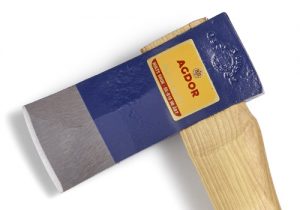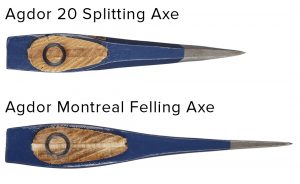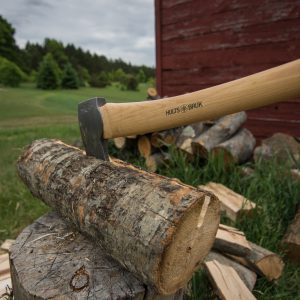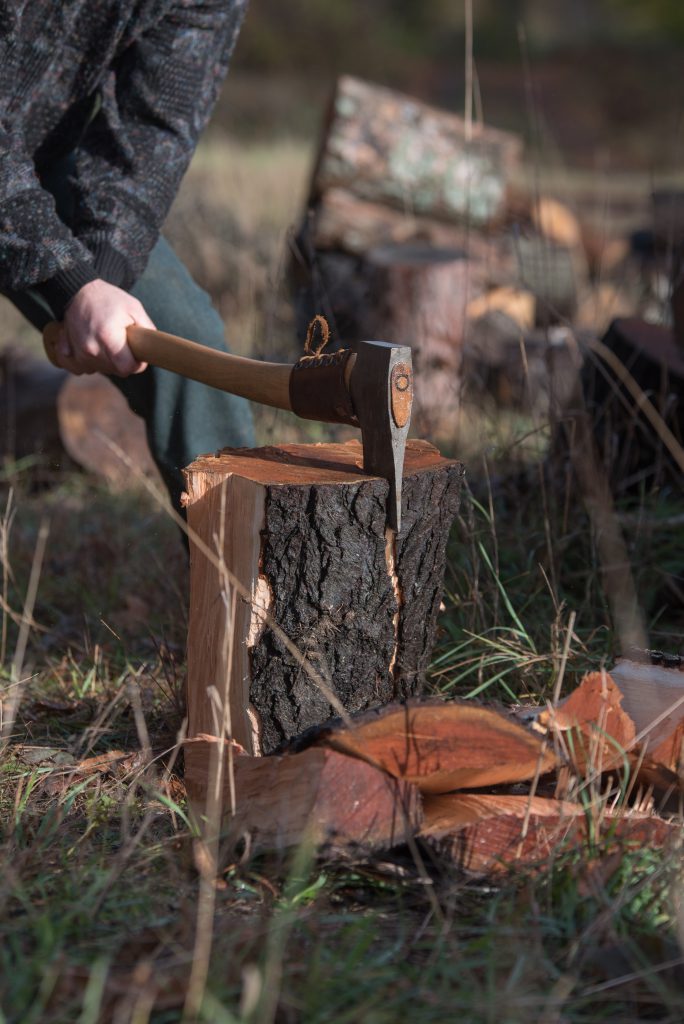
The Swedish splitting axe has a narrow profile and a flat blade that cuts deep. As the axe enters the wood, a prominent metal spine that runs along the cheeks helps push the wood apart like a wedge.
Mauls, splitting axes, hatchets and felling axes are not all the same. Mauls are made to use leverage to pry wood apart. Weighing between 6-8 lb., mauls can be heavy to swing and generate a lot of shock which can lead to fatigue

Hatchets and felling axes are made for specific tasks like cutting down trees or limbing branches. For these tasks a long, flat blade allows the axe to make deep broad cuts across the wood grain. Unlike a felling axe, the Swedish splitting axe has a wide convex shape that splits wood along the grain.

Hults Bruk Swedish splitting axes fit between a maul and a felling axe. Lighter and smaller than a maul, these splitting axes are easy to handle and can be used for a longer period of time.
The Swedish splitting axe can perform an old method of splitting long logs horizontally and hitting directly into the bark. Using this method takes longer for the wood to dry. Longer logs need less storage space when drying and the larger pieces are easier to transport through the forest.
Swedish splitting axes
Hults Bruk Sarek Splitting Axe
As part of Hults Bruk’s premium line of axes, the Sarek boasts a 3.5-pound, expertly hand-forged Swedish steel axe head left blackened by the fire and sharpened to a razor’s edge. The axe head is secured to a 30-inch long, straight shaped handle made from solid American hickory.
Our smallest splitting axe is intended for lighter splitting tasks, like firewood and kindling. The 2 lb., razor sharp axe head and 20-inch American hickory handle make it a great choice for those looking for packability on the trail or in the truck.

Tips for Splitting Wood
Look for weaknesses in the wood and take advantage of existing cracks in the wood to help direct your first blow. Swing straight down toward the top of the block, using your body weight then give the axe handle a slight twist just as the bit hits the block. This helps pop the block of wood apart and prevents the axe from sticking. On a knotty block of wood start splitting from the outside edges, cutting off the sides. If the axe gets stuck in the block you are trying to split, the best way to remove it without damaging the axe is to tap the end of the handle sharply downward with the palm of your hand.


